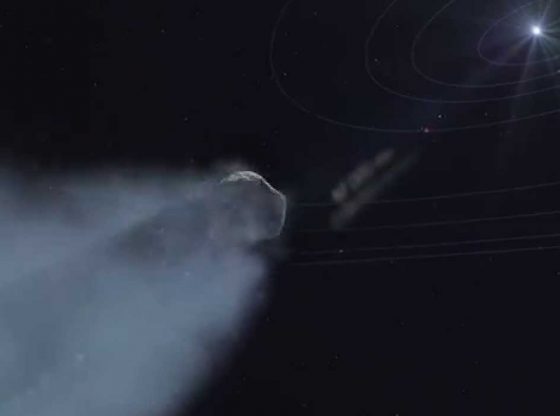
Mars is cold, mostly dry, and a place where liquid water appears only fleetingly. But water ice does exist on the Red Planet, and in the northern lowlands, Korolev crater holds a veritable reservoir nearly 1.8 (1.1 miles) thick in places.
The stunning crater in the northern lowlands of Mars is filled with ice all year round owing to a trapped layer of cold Martian air that keeps the water frozen. The 80 kilometers (50-mile) wide crater contains 2209 cubic kilometers (530 cubic miles) of water ice, as much as Great Bear Lake in northern Canada.
Scientists named Korolev crater after Soviet-era rocket engineer Sergei Korolev, a man so important to the Russian space program that his name was a closely guarded secret. Korolev worked on the Sputnik programme that sent the first artificial satellites into space in the 1950s, and later on the Vostok programme that carried Yuri Gagarin into the history books as the first man to orbit Earth.
The new images beamed back were taken by the European Space Agency’s Mars Express probe, which swung into orbit around the planet on Christmas Day 2003. Mars Express photographed the Korolev crater with its high-resolution stereo camera, an instrument that can pick out features 10 metres wide, or as small as 2 metres when used in super-resolution mode.
They show that the lip around the impact crater rises high above the surrounding plain. When thin Martian air then passes over the crater, it becomes trapped and cools to form an insulating layer that prevents the ice from melting.

The Colour and Stereo Surface Imaging System (CaSSIS) instrument aboard the ExoMars Trace Gas Orbiter, which began operating at Mars on 28 April 2018, also snapped a beautiful view of part of Korolev crater – this was one of the very first images the spacecraft sent back to Earth after arriving at our neighboring planet.












![OpenAI. (2025). ChatGPT [Large language model]. https://chatgpt.com](https://www.illustratedcuriosity.com/files/media/55136/b1b0b614-5b72-486c-901d-ff244549d67a-350x260.webp)
![OpenAI. (2025). ChatGPT [Large language model]. https://chatgpt.com](https://www.illustratedcuriosity.com/files/media/55124/79bc18fa-f616-4951-856f-cc724ad5d497-350x260.webp)
![OpenAI. (2025). ChatGPT [Large language model]. https://chatgpt.com](https://www.illustratedcuriosity.com/files/media/55099/2638a982-b4de-4913-8a1c-1479df352bf3-350x260.webp)








